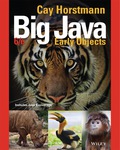
To draw the red square and fill it with the specified background of yellow color it is need to use three methods such as “Rectangle()”, “fill()”, and “SetColor()”.
Rectangle() method:
- For two dimensional objects, the graphics2D class is used to draw the objects.
- The “Rectangle()” method contains the respective four co-ordinates such as “left, “top” , “right”, and “bottom”.
- The first parameter “left” represents the x-coordinate of top left corner.
- The second parameter “top” represents the y-coordinate of top left corner.
- The third parameter “right” represents the x-coordinate of right bottom corner.
- The fourth parameter “bottom” represents the y-coordinate of right bottom corner.
- The “Rectangle()” method follows the same co-ordinates of rectangle object. But for right and bottom co-ordinate it passes the same value as an argument to draw the square.
Let use the following syntax to draw the rectangle or square,
Rectangle(left,top,right,bottom);
Fill and set the color using “fill()”and “setColor()”:
Normally, the text strings and shapes drawn on the window are drawn with black color pen. To change the color of the string, the java uses the object type of “Color.Java” to set the Red, Green, and Blue (RGB) values.
Let use the following syntax to set the color,
// Set the color passed as argument
g2.setColor(Color.nameofcolor);
The method “setColor()” is used to set the specified color.
Let use the following syntax to fill the shape of the color,
// Fill the color inside of the shape
g2.fill(shape);
The method “fill()” is used to fill the color for specified shape passed as argument.
Want to see the full answer?
Check out a sample textbook solution
Chapter 2 Solutions
EBK BIG JAVA: EARLY OBJECTS, INTERACTIV
- show all the workarrow_forwardList down the strenghts and weaknesses of your team project for Capsim Simulation? Explan.arrow_forwardCapsim Team PowerPoint Presentations - Slide Title: Key LearningsWhat were the key learnings that you discovered as a team through your Capsim simulation?arrow_forward
- Write the SQL code that permits to implement the tables: Student and Transcript. NB: Add the constraints on the attributes – keys and other.arrow_forwardDraw an ERD that will involve the entity types: Professor, Student, Department and Course. Be sure to add relationship types, key attributes, attributes and multiplicity on the ERD.arrow_forwardDraw an ERD that represents a book in a library system. Be sure to add relationship types, key attributes, attributes and multiplicity on the ERD.arrow_forward
 Database System ConceptsComputer ScienceISBN:9780078022159Author:Abraham Silberschatz Professor, Henry F. Korth, S. SudarshanPublisher:McGraw-Hill Education
Database System ConceptsComputer ScienceISBN:9780078022159Author:Abraham Silberschatz Professor, Henry F. Korth, S. SudarshanPublisher:McGraw-Hill Education Starting Out with Python (4th Edition)Computer ScienceISBN:9780134444321Author:Tony GaddisPublisher:PEARSON
Starting Out with Python (4th Edition)Computer ScienceISBN:9780134444321Author:Tony GaddisPublisher:PEARSON Digital Fundamentals (11th Edition)Computer ScienceISBN:9780132737968Author:Thomas L. FloydPublisher:PEARSON
Digital Fundamentals (11th Edition)Computer ScienceISBN:9780132737968Author:Thomas L. FloydPublisher:PEARSON C How to Program (8th Edition)Computer ScienceISBN:9780133976892Author:Paul J. Deitel, Harvey DeitelPublisher:PEARSON
C How to Program (8th Edition)Computer ScienceISBN:9780133976892Author:Paul J. Deitel, Harvey DeitelPublisher:PEARSON Database Systems: Design, Implementation, & Manag...Computer ScienceISBN:9781337627900Author:Carlos Coronel, Steven MorrisPublisher:Cengage Learning
Database Systems: Design, Implementation, & Manag...Computer ScienceISBN:9781337627900Author:Carlos Coronel, Steven MorrisPublisher:Cengage Learning Programmable Logic ControllersComputer ScienceISBN:9780073373843Author:Frank D. PetruzellaPublisher:McGraw-Hill Education
Programmable Logic ControllersComputer ScienceISBN:9780073373843Author:Frank D. PetruzellaPublisher:McGraw-Hill Education





